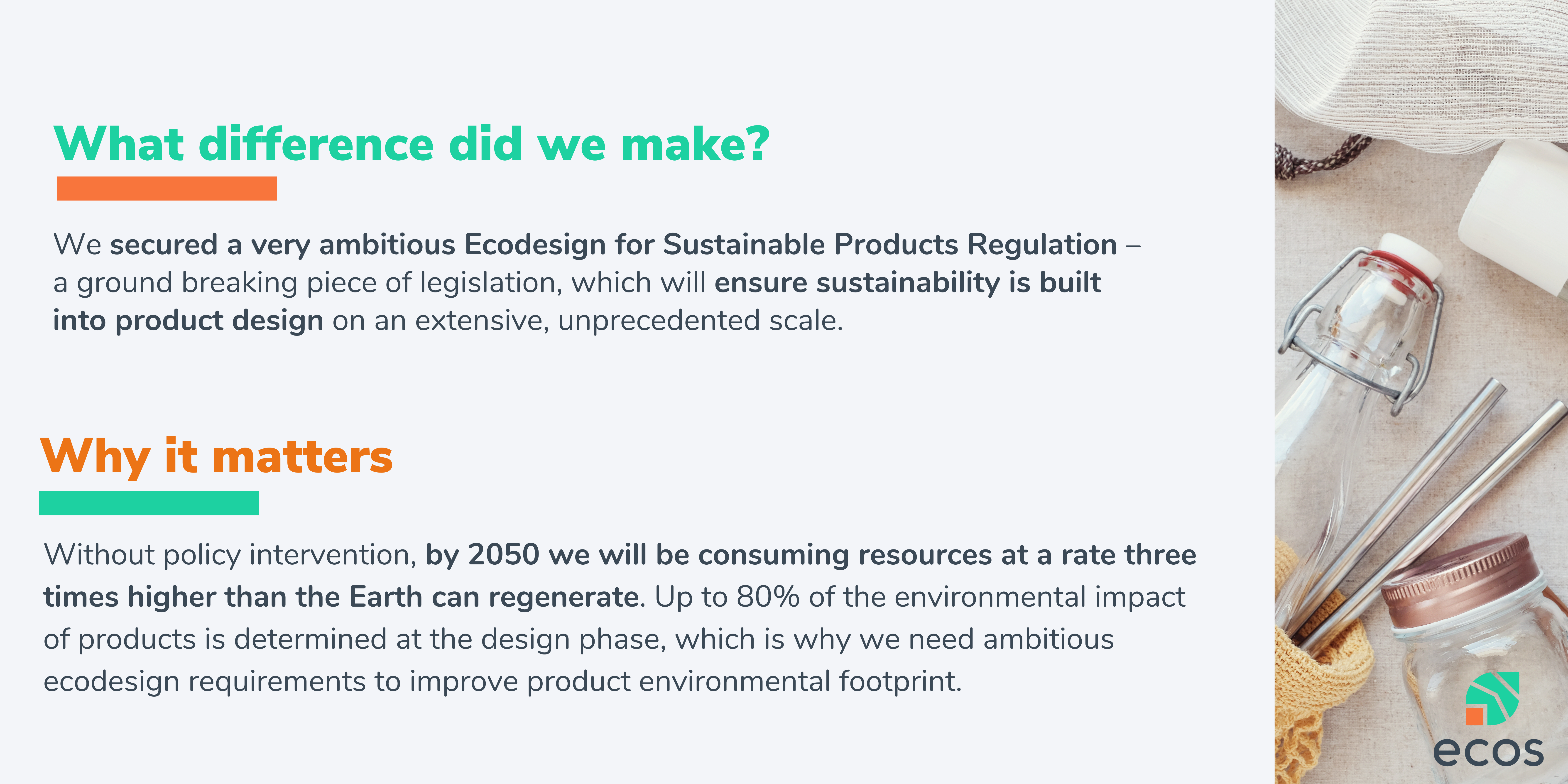4 years in the making! The ecodesign revolution with the ESPR is here
We need sustainable products to be the norm – a long-standing priority for ECOS. Short-lived, disposable, toxic, and unrepairable items must become a thing of the past – to reduce wasted resources and limit the impact products have on the environment at every stage of their lifecycle.
Enter ecodesign.

Most of the environmental impacts from products are determined in the design phase, so it is crucial to tackle these issues before they even occur – by designing products that are toxic-free, sustainable, and built to last.
For many years, we have been vocal in expanding the ecodesign framework to all products, advocating for wider and better ecodesign rules based on the proven success of the 2009 Ecodesign Directive, which significantly reduced the environmental impacts of our everyday appliances by incentivising manufacturers to design more energy and resource efficient products while pushing the worst-performing ones off the market.
EU ecodesign regulation – years in the making
In 2023, our calls became a reality. Negotiations for the Ecodesign for Sustainable Products Regulation (ESPR) concluded late in December 2023, more than four years since ECOS first campaigned for ecodesign principles to apply to all sectors and products. In 2019 we demonstrated how ecodesign could help make plastic less polluting, make textiles more durable and repairable, and reduce the impacts of construction products. In 2021 and 2022 we focused directly on making sustainable products the norm worldwide.
With our ecodesign expertise across many products and sectors, we pushed for an ambitious regulation every step of the way – with many of our positions on ESPR adopted by the European Commission and Parliament. As well as providing evidence, arguments, and recommendations, we collaborated with our members, partners and progressive industry to influence policy-makers, and coordinated environmental NGO calls for stronger ambition, all of which shaped the narrative on the ESPR in all EU institutions.
Securing an ecodesign regulation that makes a difference
Thanks to a smart advocacy strategy and the powerful alliances we formed, both the European Commission and the European Parliament heard, and took on board, our key asks on the file. At every step of the negotiations, we fought to maintain high ambition on our priorities. The initial proposal was good – but the final text was even better, and included many of our long-standing asks:
- Apply the ESPR framework to all products traded on the European market and publish a working plan with priority products and sectors. The ESPR can also intervene if existing sector-specific legislation fails to sufficiently address the sector’s environmental impact (all eyes on construction products!).
- Ban the destruction of unsold textiles and footwear – just because a new collection is in stores, it does not mean we need to incinerate the previous one.
- Link the ESPR objectives to key environmental indicators – such as material footprint, to bring sustainability of products within the planet carrying capacity.
- Introduce transparency on substances of concern throughout the value chain via a digital product passport – people must know if their products contain dangerous chemicals.
The ESPR activates a new era for sustainable products. Ambitious ecodesign rules will push the most polluting goods off the market and mandate that manufacturers prioritise the environment. This overarching regulation will directly apply to all EU member states and set rules on how to apply ecodesign to different products. It is also expected that the ESPR will have a wide-reaching impact on global value chains – any company that puts a product on the EU market will need to design it with the environment in mind.
The end of the road? Not yet – implementation will be key
It will take time to bring the ESPR to life and (re)design products that do not meet the high ambition of this legislation, but the EU has finally laid the foundations for a new era of sustainable design.
Ultimately, the success of the initiative will depend on its implementation, including the important role of standardisation. Prioritising products and horizontal measures will be key to avoid potential delays and ensure that the most polluting products are dealt with first. This needs to be combined with effective market surveillance and enforcement.
The ESPR will ensure that making design choices based on environmental considerations is self-evident. Sustainability must be built into a product’s whole lifecycle and design – and the new regulation will make this happen on an extensive, unprecedented scale, contributing to the EU’s climate and energy goals.
We will continue to be there every step of the way.


